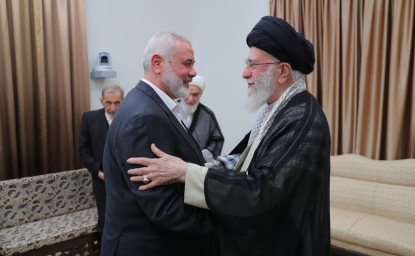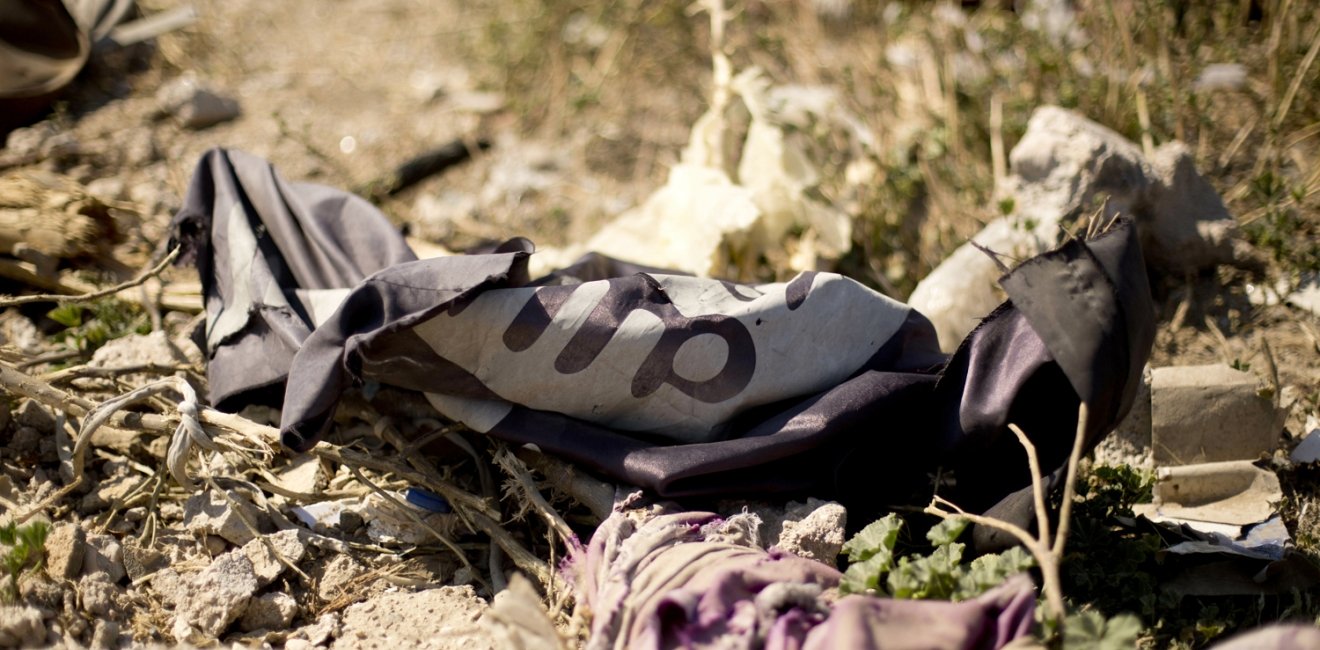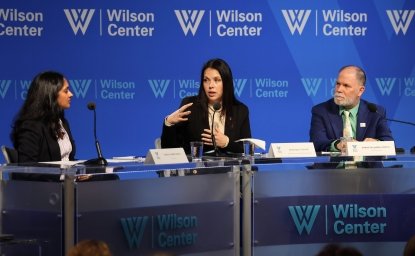By June 29, 2020, six years after Abu Bakr al Baghdadi declared a jihadi state, ISIS had lost tens of thousands of fighters and its physical caliphate, created from chunks of Iraq and Syria that once equaled the size of Britain. Yet on its anniversary, ISIS was surging once again. Between January and May 2020, it carried out more than 600 attacks—assassinations, suicide bombings, and assaults on government targets—in Iraq and Syria. “This threat is not going to go away. There's never going to be a time when either ISIS or whatever follows ISIS is going to be completely absent from the global stage,” General Kenneth F. McKenzie Jr., the head of U.S. Central Command, said at the Middle East Institute on June 10. “Even the brightest possible future is not a bloodless future, but it can be a future where local security forces are able to contain ISIS without significant external help.”
The post-caliphate insurgency was foreshadowed in “The Jihadi Threat,” a report by 20 experts published by the U.S. Institute of Peace and the Woodrow Wilson International Center for Scholars in 2016-17. On ISIS’s six anniversary, the authors again assessed the ISIS threat to the Middle East and the wider world in 2020. Charles Lister warned about the increasing “localization” of jihadism and its exploitation of long-standing ethnic and sectarian tensions. Jennifer Cafarella said that U.S.-led coalition forces may slow ISIS but not defeat it without addressing the deep, unresolved political and economic grievances that alienate Iraqis and Syrians from their governments. Katherine Zimmerman said ISIS affiliates beyond Iraq and Syria—especially in Africa—have been thriving. Daveed Gartenstein-Ross explained ISIS’s ability to adapt to chaos, notably in more attacks during the COVID-19 pandemic. The experts’ comments are below, followed by General McKenzie’s remarks.
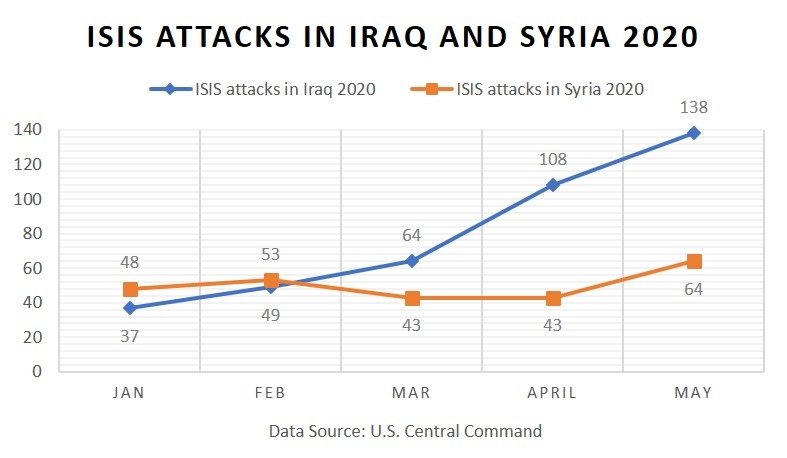
Charles Lister | Senior Fellow, Director of Countering Terrorism & Extremism Program, Middle East Institute
ISIS is a shadow of itself when compared to earlier years. It controls no territory in Syria and Iraq; has lost valuable revenue streams; and has been forced to operate in the shadows. However, it’s important to note than ISIS and its predecessors have existed for longer without territory than with it and that many of the underlying root causes and drivers that allowed it to explode into our attention in 2014 still exist today. Syria continues to offer a near-perfect recipe of ingredients for the likes of ISIS to thrive again in the future, while the situation in Iraq remains troubled and the ability of security forces to project force beyond major towns and cities remains extremely limited. On both sides of the Iraq-Syria border, ISIS is attempting to resurge in particularly amenable regions — in Syria, in the desert region west of the Euphrates and in Iraq, in rural and mountainous Sunni-majority regions in Salah ad Din, Diyala and Kirkuk. Assuming current conditions remain in place, it’s hard not to imagine ISIS continuing its slow and methodical recovery, though frankly, envisioning it reaching back to its 2014 days remains a stretch — at least for now.
It might actually be beyond Syria and Iraq where ISIS is evolving most worryingly — embedding increasingly effectively within explicitly local conflict theaters in which the global jihad has long been an irrelevance but all of the sudden, acquiring an ISIS affiliation has brought renewed momentum to long-stagnant fronts. Especially in Africa — across the Sahel and in places like Mozambique — ISIS’s steady expansion and increasingly deadly capabilities ought to be an issue of very serious concern for policymakers around the world. This localization of jihad and the increasingly potent exploitation of ungoverned spaces and long-standing ethnic and sectarian tensions is likely to become the primary driver of jihadism’s growth worldwide in the coming months and years. Given the unique contexts attributed to each and every new front of jihadist activity these days, we’re witnessing increasingly mobile, flexible, and socially smart terrorist actors emerge onto the scene — presenting challenges to local authority than may prove unmanageable locally and extremely challenging internationally.
Jennifer Cafarella | National Security Fellow, Institute for the Study of War
ISIS remains a potent enemy force and is committed to re-establishing a physical caliphate. It has reconstituted a capable insurgent force in Iraq and Syria, surging dangerously in areas difficult for the US-led anti-ISIS coalition to operate including in Iraq’s disputed internal boundaries and areas under the control of the Assad regime. ISIS is also expanding its operations globally, creating new provinces in Africa and Central Asia while expanding the control of existing provincial nodes, including in East Asia. The U.S. and its European allies have been successful in preventing another mass casualty attack, and the anti-ISIS coalition is slowing ISIS’s reconstitution in Iraq and Syria. These successes buy important time for broader political and economic engagement to reduce the underlying conditions that ISIS exploits. The U.S. has not prioritized such follow-on activities, however. As a result, anti-ISIS coalition pressure is unlikely to block or reverse ISIS’s reconstitution and may fail to prevent its re-establishment of a physical caliphate.
The impending U.S. withdrawal from Afghanistan will accelerate ISIS’s global recovery. ISIS will gain increased freedom of operation in Afghanistan in addition to al Qaeda, which is already operating in numerous Afghan provinces. Afghanistan’s religious significance extends the impact of these groups’ operations there to other theaters and legitimizes their propaganda and recruitment efforts. ISIS is also positioning itself to recruit disillusioned fighters who are opposed to the Taliban’s peace deal with the US, which al Qaeda supports. Similar competition is underway in West Africa, where al Qaeda’s affiliate is attempting to replicate the U.S.-Taliban deal with the Malian government to secure a withdrawal of French forces. ISIS is ramping up attacks against al Qaeda in response. This competition increases the overall threat America faces by Salafi jihadist groups by fueling greater instability and state failure while creating a wider array of recruitment pipelines.
Katherine Zimmerman | Resident Fellow, Adviser to Critical Threats Project, American Enterprise Institute
The surge of attacks by Islamic State militants in Iraq—now widely reported—displays a quiet return of a group that six years ago threatened Iraq’s capital and the integrity of the state. The group’s resurgence in Iraq may not follow the path charted in the lead-up to the acme of its power in 2014 and 2015. Similarly, how the group reasserts itself in neighboring Syria will take a different course. A distinction must be made, however, between the strength of the Islamic State—the transnational network under Abu Ibrahim al Hashimi al Qurayshi—and the Islamic State in Iraq and Syria (ISIS)—the regional group. Conflating the two makes the same mistake as assessing al Qaeda’s strength and threat from its fortunes in Afghanistan-Pakistan.
ISIS poses a growing threat to U.S. partners in Iraq and Syria, including the Iraqi government and security forces and the Syrian Defense Forces. It will seize opportunities created by the U.S. troop reduction in Iraq to reestablish itself further though it has a long way to rebuild before it can control terrain as it once did. ISIS may provide a vector to vet foreign recruits for high-profile attacks, but the foreign fighter flow has largely tapered off. Certainly, an ISIS comeback bolsters the Islamic State globally and has an outsized impact on perceptions of the Islamic State. The cadre of Islamic State leaders hiding in Iraq and Syria very likely relies on the ISIS network for some of its security.
The Islamic State’s threat to the West remains very real. That threat remained high even after the territorial defeat of ISIS in Baghouz, Syria, in March 2019 and the death of Abu Bakr al Baghdadi in October 2019. Islamic State groups outside of Iraq and Syria, especially in Africa, have been thriving. German police arrested five individuals were plotting attacks against U.S. air force bases in Germany on terror charges in April 2020. The cell had pledged allegiance to the Islamic State and were in touch with senior operatives. Stamping out the Islamic State and its ability to inspire terror attacks require more than pressure on ISIS or individual branches, a lesson the U.S. should have learned from its approach to fighting al Qaeda.
Daveed Gartenstein-Ross | Chief Executive Officer, Valens Global
We’re beginning to enter into truly uncharted territory with respect to ISIS and other violent non-state actors due to the global COVID-19 pandemic, which makes a full range of shock events far likelier than normal. In particular, the 2016 report correctly projected that ISIS’s territorial losses “may not fundamentally undermine its appeal.” We projected that “[a]s an extremist organization, ISIS is likely to endure for years to come as a pure insurgency using terrorist tactics.” ISIS has charted a sometimes predictable course in the years since, with its propaganda and recruitment efforts shifting in response to its losses, while the group has grown increasingly reliant on the successes of its regional branches.
But ISIS has also maintained the capacity to surprise us. The Siege of Marawi, for example, proved more ferocious and longer lasting than most experts would have projected. Few people would have predicted ISIS to grow in Mozambique as it has. The global pandemic represents a striking discontinuity. Other high-impact discontinuous events will certainly result from it. Nassim Nicholas Taleb’s Antifragile focuses on things that benefit from disorder. Most violent non-state actors are largely, though not entirely, antifragile. Transnational criminal organizations, given their business model, may not fit Taleb’s definition of antifragile—but ISIS certainly does. ISIS and its affiliates have escalated their operations since the pandemic began, especially in the Middle East and Africa. The group’s propaganda has adapted to the pandemic, though I’m sure it will continue to evolve.
Interview with General Kenneth F. McKenzie Jr., Head of U.S. Central Command
by Paul Salem, President of the Middle East Institute, on June 10, 2020
Salem: On the counterterrorism side, ISIS and al Qaeda is a threat that's been out there for 20, 30 years and it mutates and adapts to new conditions. No doubt that there has been a defeat of the physical caliphate. But obviously the threat mutates and doesn't go away. From where you sit in CENTCOM, how do you see the map of ISIS and al Qaeda? Where are they redistributing themselves? How are they mutating? Obviously, they still exist in Syria, to some degree in Iraq, you know, Yemen, Afghanistan, North Africa and this ongoing war with these particular types of terrorist groups. What keeps you up at night?
McKenzie: Joe Votel, one of the last things he did, as the Commander of Central Command, was oversaw the completion of the physical destruction of the caliphate up and down the Euphrates River Valley. That was a very effective operation. But what ISIS has tried to go to ground and maintain, first, a global cyber presence, which they've been able to do — intermittently. And also go to small cellular structure, which allows them to carry out local attacks.
They always have a desire, an aspiration to reestablish a physical caliphate. That's a critical part of their ideology, so they will move in that direction. However, with the pressure put upon them in Syria through our SDF partners up and down the Euphrates River Valley and in Iraq proper, working largely with Iraqi security forces, we've been able to prevent them from realizing those external attack dreams that they have and that they still promulgate. This threat is not going to go away. There's never going to be a time when either ISIS or whatever follows ISIS is going to be completely absent from the global stage. So the future, even the brightest possible future is not a bloodless future, but it can be a future where local security forces are able to contain ISIS without significant external help. I'm not saying there wouldn't be some enabling support for them, but it should be able to be contained locally.
Local security forces are the key that will be answerable to civilian leadership on the ground. That would then be able to have a human rights record that would stand scrutiny and be understood by all, because that's another half of the equation. The cure should not be worse than the disease itself. And we're always mindful of that when we operate in Iraq and Syria. That's an area where the Syrians west of the Euphrates River and the Russians are not mindful of. They will struggle to create long-term conditions that will prevent a systemic rise of ISIS. So we will continue to operate against them.
Also, there's an al Qaeda element out in Northwest Syria that we see in sort of that that pocket around Idlib, that witch's brew out there, that's under a variety of pressure, that — little bit of a ceasefire out there right now — they also maintain an aspirational desire to operate outside and generate external attacks.
McKenzie: So let me just shift now to Afghanistan. The home of al Qaeda is in eastern Afghanistan, right up against the border. Very small presence but the global leader is there. He doesn't have the ability to talk much, but he's probably physically up in that area somewhere. There's also a small ISIS presence there. Now, the Taliban have no friendship for ISIS, and they have actually done a great deal of work to compress ISIS over the last year. It remains to be seen if they would have the ability to actually bring ISIS all the way down. Don't know. Down in southern Nangarhar Province, they have had success in reducing their ability to hold ground there. It is less clear to me, though, the Taliban's relationship with al Qaeda.
But the key thing is then down in the Arabian Peninsula, clearly small pockets remain there and we try to keep pressure on them there. Ongoing events in the Arabian Peninsula sometimes make it difficult to do that. All of these entities want to think globally. They want to inspire — they want to direct if they can. We talk about direction of action, enabling action, and inspiring action. Today, they're limited to inspiring action. That is radicalization, typically via cyber or other means of people in Western countries that are then motivated to go out and conduct lone wolf attacks or something like that. We will work very hard to try to stop that. It is very hard for them now to do enabled or directed attacks, because those mechanisms for the transfer of funds, for the transfer and movement of people, and other things like that are very hard for them to do.
McKenzie: It is a core aspirational goal of ISIS, certainly, and al Qaeda as well, to be able to renew that connective tissue that links the homeland, which is my theater largely, but also to sub-Saharan Africa, U.S. AFRICOM, out into the Southwest Pacific and other areas. That is their aspiration. One of the key things that we try to do in this theater — and also in conjunction with U.S. Special Operations Command and the global coalition—is prevent the reestablishment of that connective tissue. Again, we're not going to get to perfection on this. I suspect no matter what we do, particularly in the cyber domain, there's always going to be the possibility of radicalization from a distance. And people that are just going to be inspired by the virulent message that these entities put forth. So that's always going to be a threat.
What we want to do is prevent organized detailed planning, because when you're running for your life up and down the Euphrates River Valley, listening to the noise of an MQ-9 overhead, it's hard to think about conducting attack planning against Detroit. So if you don't know where your next meal is coming from, it's hard to hold an organized meeting of the board of directors to talk about global planning. So that's sort of how we get after these things that we will continue to do that.

The Islamists
Learn more about Hamas and how it relates to similarly aligned organizations throughout the region. Read more


Middle East Program
The Wilson Center’s Middle East Program serves as a crucial resource for the policymaking community and beyond, providing analyses and research that helps inform US foreign policymaking, stimulates public debate, and expands knowledge about issues in the wider Middle East and North Africa (MENA) region. Read more

Explore More
Browse Insights & Analysis
Israel Escalates Attacks in Gaza: What’s Next?
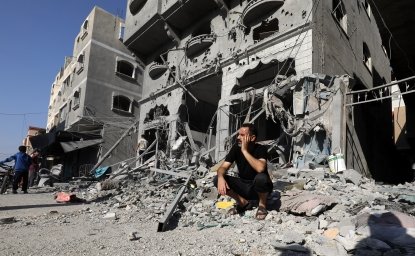
Israel Expands Operations on Multiple Fronts: Perspectives on the Conflict
